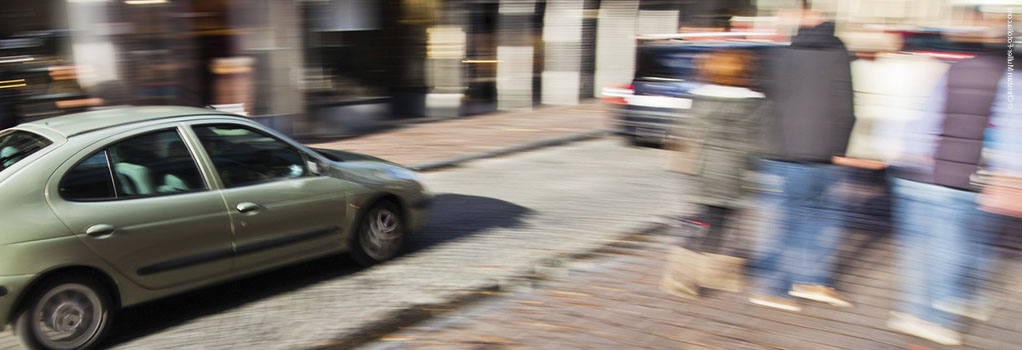
Development
Urban Scenarios
Levels of automation* & functions
AdaptIVe designs embedded solutions that address the most demanding urban driving scenarios, with an average vehicle speed in the range from 10 to 70 km/h.
Assisted automation
City cruise
The automated system takes over vehicle longitudinal control and the driver takes over vehicle lateral control.
Partial automation
Supervised city control
- Automatic lane following and speed adaptation
- Automatic following of the vehicle in front
- Automatic avoidance of obstacle or VRU
The automated system takes over longitudinal and lateral controls, the vehicle follows the road lane.
Conditional Automation
City chauffeur
- Automatic lane change
- Intersections and roundabouts handling
The automated system takes over the control of vehicle dynamics including overtaking manoeuvers.
High automation
Safe stop
If the driver does not react to a take-over request, the system slows down and safely stops the vehicle.

Challenges
- Urban scenarios are particularly challenging for the environment’s complexity and dynamic behaviours; traffic is dense, several types of road users or static obstacles are present, and the driving tasks include negotiating traffic at roundabouts, intersections and merging manoeuvres.
- A key point for this development is the integration of existing and new functions into a single system; this integration will lead to the capability of adapting the level of support – from driver assistance to partial or high automation – depending on the situational complexity and system availability.
Main innovations
- Automated and driving support functions integrated into one system
- Dynamic adaptation between manoeuvres (assisted mode) and automatic guidance (highly automated mode)
- Implementation of an artificial co-driver, which reproduces humanlike driving
- Communication with other vehicles in order to anticipate their intentions and avoid conflicts, mainly at crossings
- Possibility of implementing high precision map-based positioning will also be investigated to compensate the limited performances of GPS positioning in urban contexts
* Classification scheme based on terms related to automated driving according to SAE and VDA. See SAE document J3016, “Taxonomy and Definitions for Terms Related to On-Road Automated Motor Vehicles”, issued 2014-01-16, see also http://standards.sae.org/j3016_201401 (→ external link) and the position paper from the VDA “Automated Driving” working group.

